Sloes, uses, properties and recipes
5 years ago · Updated 6 months ago
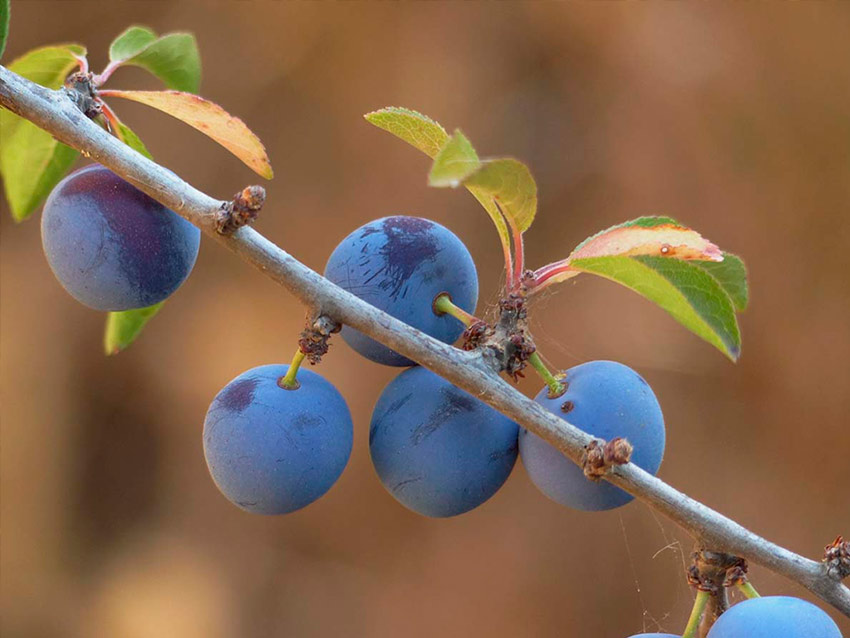
Sloes: the most coveted wild fruit and the key to a good homemade pacharán
At La Casa de las Setas, we are passionate about mushrooms, but we also appreciate other little treasures that nature offers us. Among them, sloes occupy a special place. Is it because of our weakness for a good pacharán? We tell you everything you need to know about this coveted wild fruit: how to recognize it in the field, where to find it, and, of course, how to use it in cooking and prepare a homemade pacharán with the authentic taste of sloes. 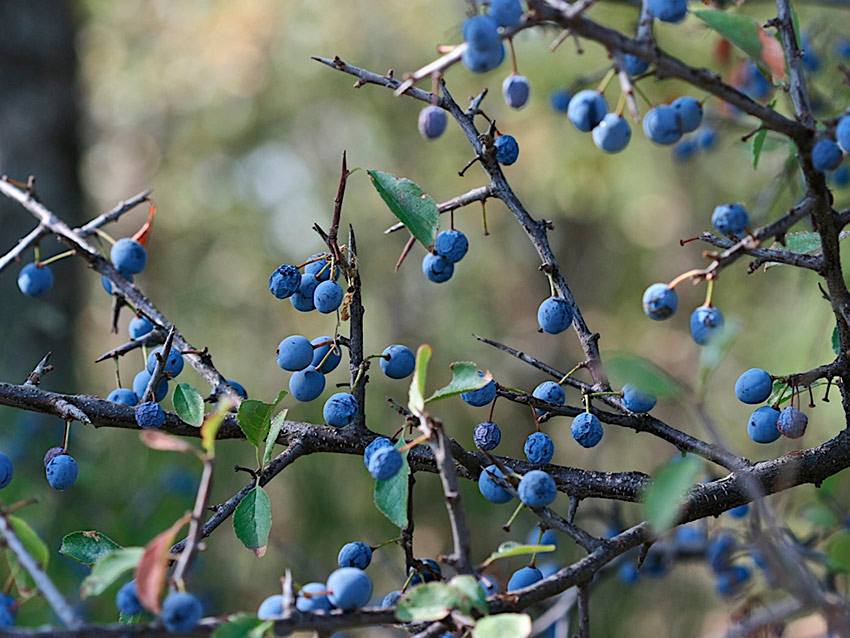
The blackthorn, Prunnus spinosa
The blackthorn (Prunus spinosa L. ), with its bluish fruit, is a thorny shrub belonging to the Rosaceae family, which loses its leaves in winter. Its origin must be located in southern Europe, the southern Caucasus, Asia Minor, and northern Africa, although its current geographical distribution is sub-Mediterranean and central European (late Euro-Siberian). In the Iberian Peninsula, it grows on calcareous soils, along paths and on the edges of mid-mountain forests up to 1,500 meters above sea level, in cool places closely associated with scrubland, sharing its habitat with blackberry (Rubus ulmifolius Schott). This shrub, which is very branched and open in habit, can reach 3 meters in height. A noteworthy feature is the dark gray color of its branches. The alternate thorns distinguish it from the black buckthorn (Rhamnus infectoria L. ), which has opposite thorns. These thorns are stems with limited growth; therefore, flowers and fruits appear on them. 
Blackthorn fruits
The fruits are small, globular, juicy drupes, 6 to 12 millimeters in diameter. They are bluish in color when ripe in August and are covered with a light bloom. The pulp is greenish. Sloes are edible, but slightly astringent and acidic. They are harvested after the first frosts, which is the ideal time, as they acquire a sweet flavor.
Sloe and wild fruit pickers, the best option
Are you one of those people who find it difficult to pick sloes one by one? Now you have the solution! There are several types of special wild fruit pickers for sloes that allow you to pick several at a time and place them in a small container. And what's more, you'll avoid getting pricked or scratched! .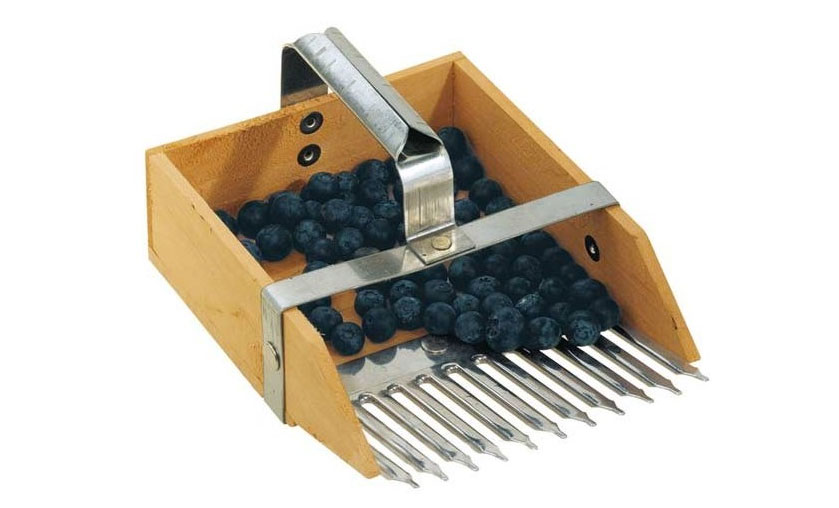
In our section , you can see the models available
Blackthorn leaves
The leaves are small, 3 centimeters long, dark green, hairless, oblong, pointed, simple, alternate, and serrated. They appear after the flowers. 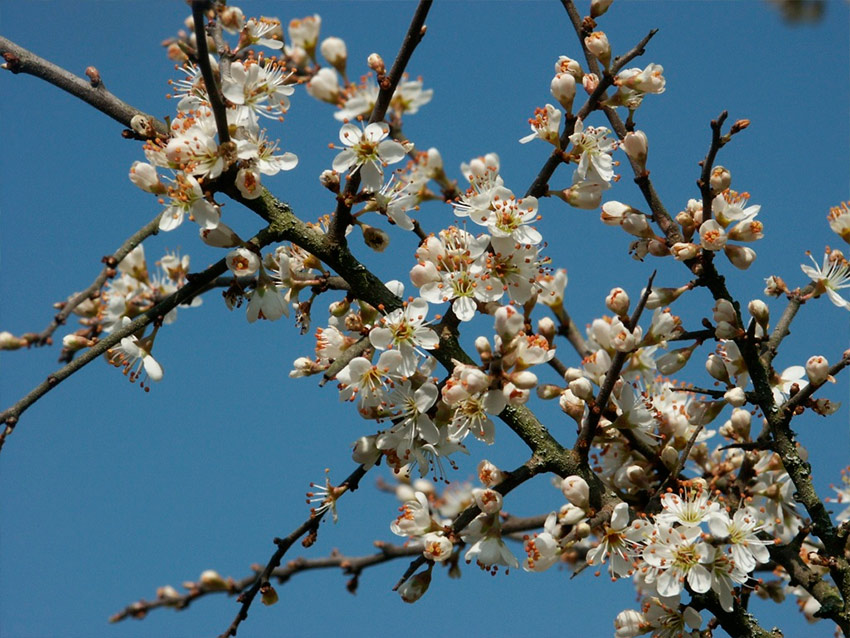
Blackthorn flowers
The flowering is very spectacular and attractive, and occurs from February to May. The flowers, 1 centimeter in diameter, are white, aromatic, and sweet, attracting bees. The corolla is formed by 5 petals. The flowers grow singly or in small groups.
A year with many sloes means few millstones

Nutritional properties of wild sloes
Sloes are low in calories, making them suitable for weight-loss diets. It is rich in fiber, which helps regulate intestinal transit, as well as vitamin C, potassium, iron, and calcium. Its antioxidant properties are effective in preventing cardiovascular disease. Similarly, consuming sloes promotes the absorption of iron from food. 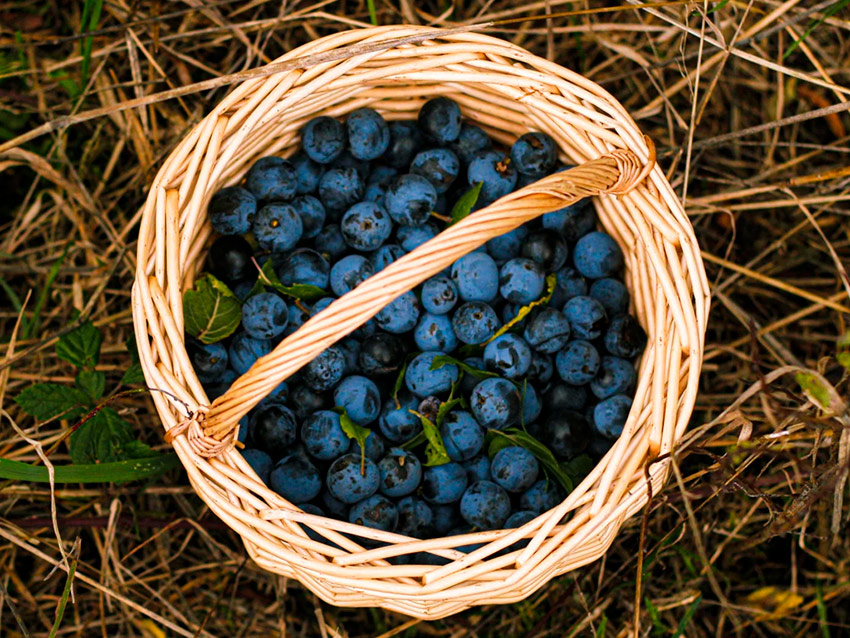
Recipes with sloes
Sloe and apple jam
- For 2 kg of jam
- Preparation: 25 minutes
- Cooking: 20 minutes + sterilization
Ingredients
- 1 kg ripe sloes
- 1.5 kg sugar
- 3 apples
Preparation
- Wash the sloes. Make an incision in the skin with a knife and press with your fingers to release the stone, using the tip of the knife to help. Place the pitted sloes in a large bowl and cover with sugar. Stir and leave to macerate for about 4 hours in a cool place.
- Place the mixture in a saucepan and blend with a hand blender to release the liquid. Peel the apples, remove the seeds and cut into pieces. Add them to the saucepan and cook over low heat. Stir often with a wooden spoon and remove any foam that forms on the edges. Cook the jam for about 20 minutes. Fill the sterilized jars, cover them, and seal them by cooking them in a water bath for 20 minutes.
Sloes can be a little sour, which is why they are mixed with other fruits, such as apples or plums. This jam is ideal for accompanying sweeter desserts, adding a touch of acidity. Try it, for example, with quince mille-feuilles and Burgos cheese. You can also cook the sloes without pitting them and then pass them through a food mill. 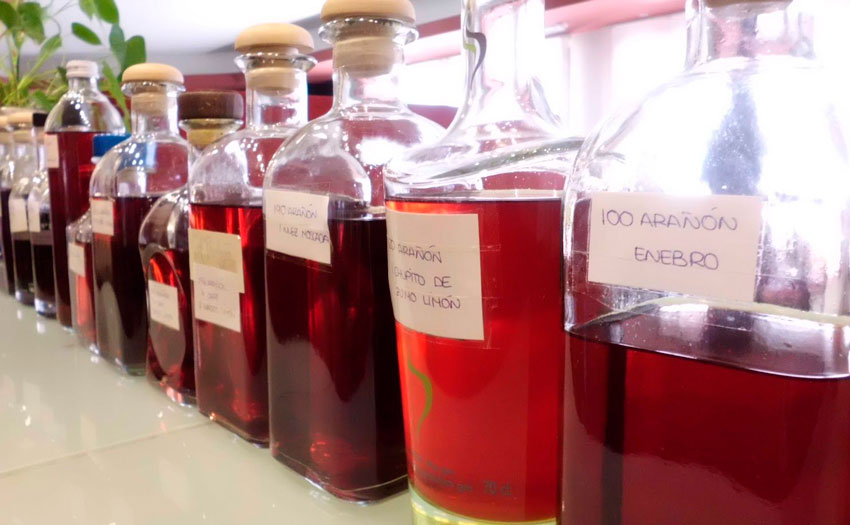
Sloe pacharán
- For 1 liter
- No cooking required
- Preparation: 30 minutes + maceration
Ingredients
- 400 g ripe sloes
- 1 liter sweet anise liqueur
- 1 cinnamon stick
Preparation
- Wash the sloes to remove any dirt and leave them to drain in a colander. Clean the bottles you are going to use to prepare the pacharán thoroughly. You can choose one large bottle or several smaller ones.
- Place the sloes at the bottom of the bottle and add the cinnamon stick. Cover with anise liqueur, close and shake to mix well. Leave to rest in a dark place for at least 6 months. You should shake the bottle every 2 or 3 weeks. Once this time has elapsed, strain the pacharán through a fine mesh strainer and discard the sloes and cinnamon. Store in the refrigerator and serve cold. After 3 months, you can drink the pacharán, but its flavor will be less intense. In any case, the sloes should not be left in the liqueur for more than 9 months, as they may start to taste like the small pits. To speed up the maceration process, you can lightly crush a few sloes, taking care not to break the small stones. You can also make an incision in them with a knife. If you wish, you can add ½ small glass of brandy or orujo, a piece of orange or lemon peel, a few coffee beans, or a few chamomile flowers.

Savarin with pacharán
- Serves 8
- Preparation: 35 minutes + resting time
- Cooking time: 45 minutes
Ingredients
- 350 g flour
- 3 eggs
- 1 glass of milk
- 100 g butter
- 50 g fresh yeast
- 25 g sugar
- A pinch of salt
For the pacharán syrup
- 150 g sugar
- 2 small glasses of pacharán
- ½ glass of water
- 1 cinnamon stick
Preparation
- Dissolve the yeast in three tablespoons of warm water and mix with 100 g of flour. Knead until it forms a ball. Leave it in a bowl with warm water until it floats.
- Mix the rest of the flour with the sugar, salt, beaten eggs, and a pinch of salt. Add the milk in a thin stream and knead to incorporate it well. Add the ball with the yeast and mix until it takes on the texture of thick cream. Leave this dough to rest in a bowl until it doubles in volume.
- Grease a ring mold and fill it halfway with the dough. Let it rest in a warm place until it rises again. Preheat the oven to 350°F. Bake the savarin for 40 minutes and let it cool on a wire rack before removing it from the pan. Remove from the heat and allow to cool. Then soak the savarin well with this syrup. Fill the hole to your liking with whipped cream and chopped fruit and serve. We hope that now, when you go out into nature and find sloes, you will look at them with new eyes. Cheers, mushrooms, and sloes!

Te pueden interesar